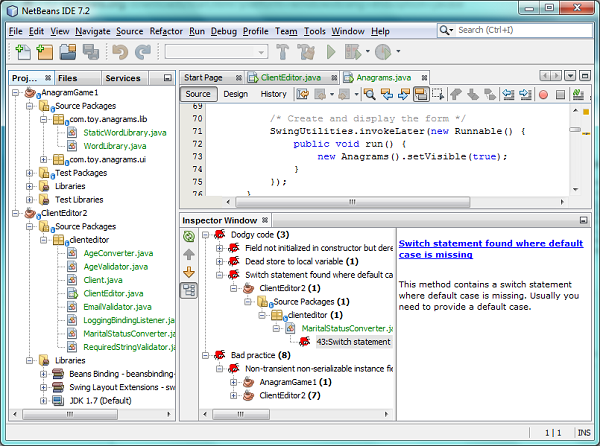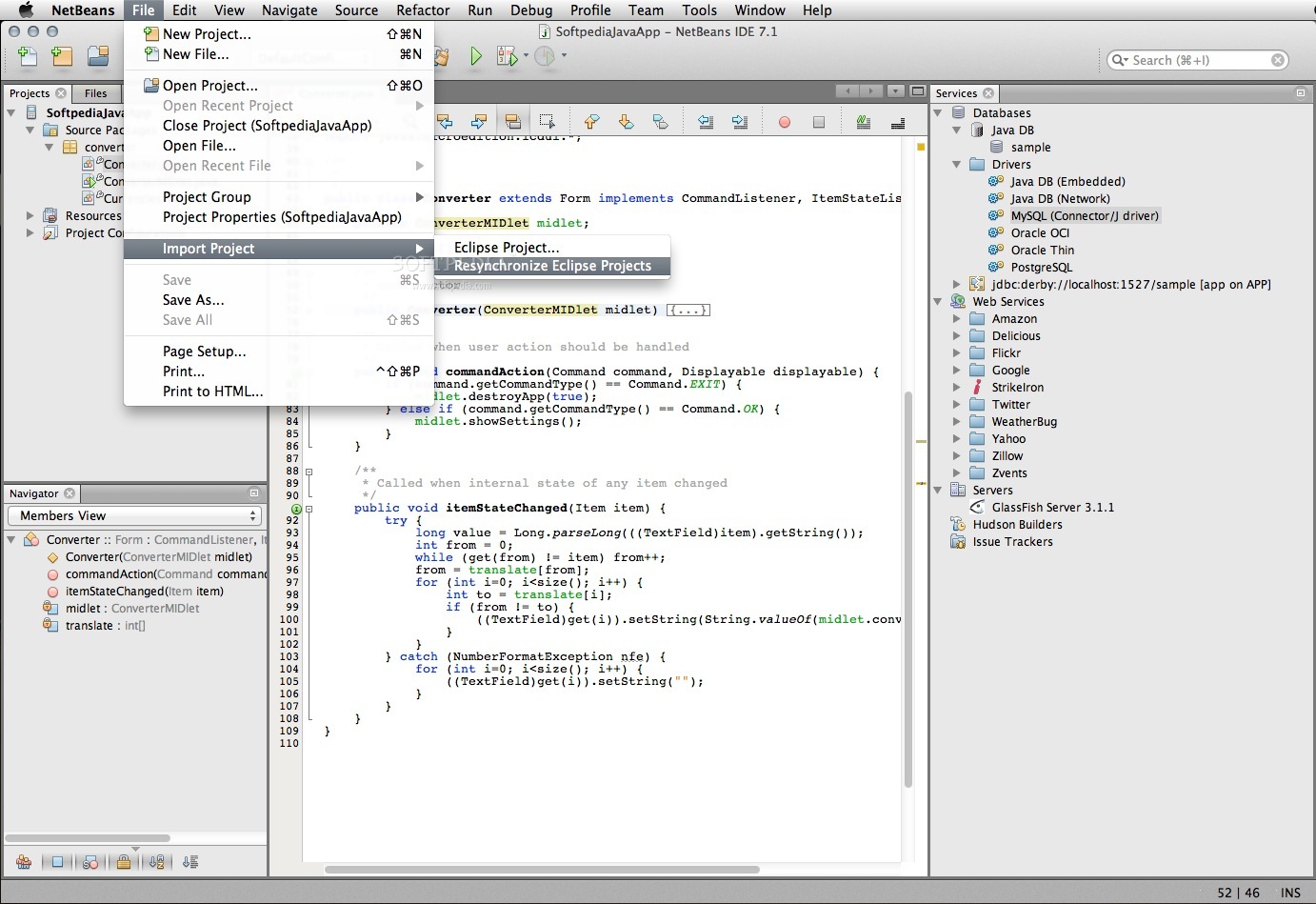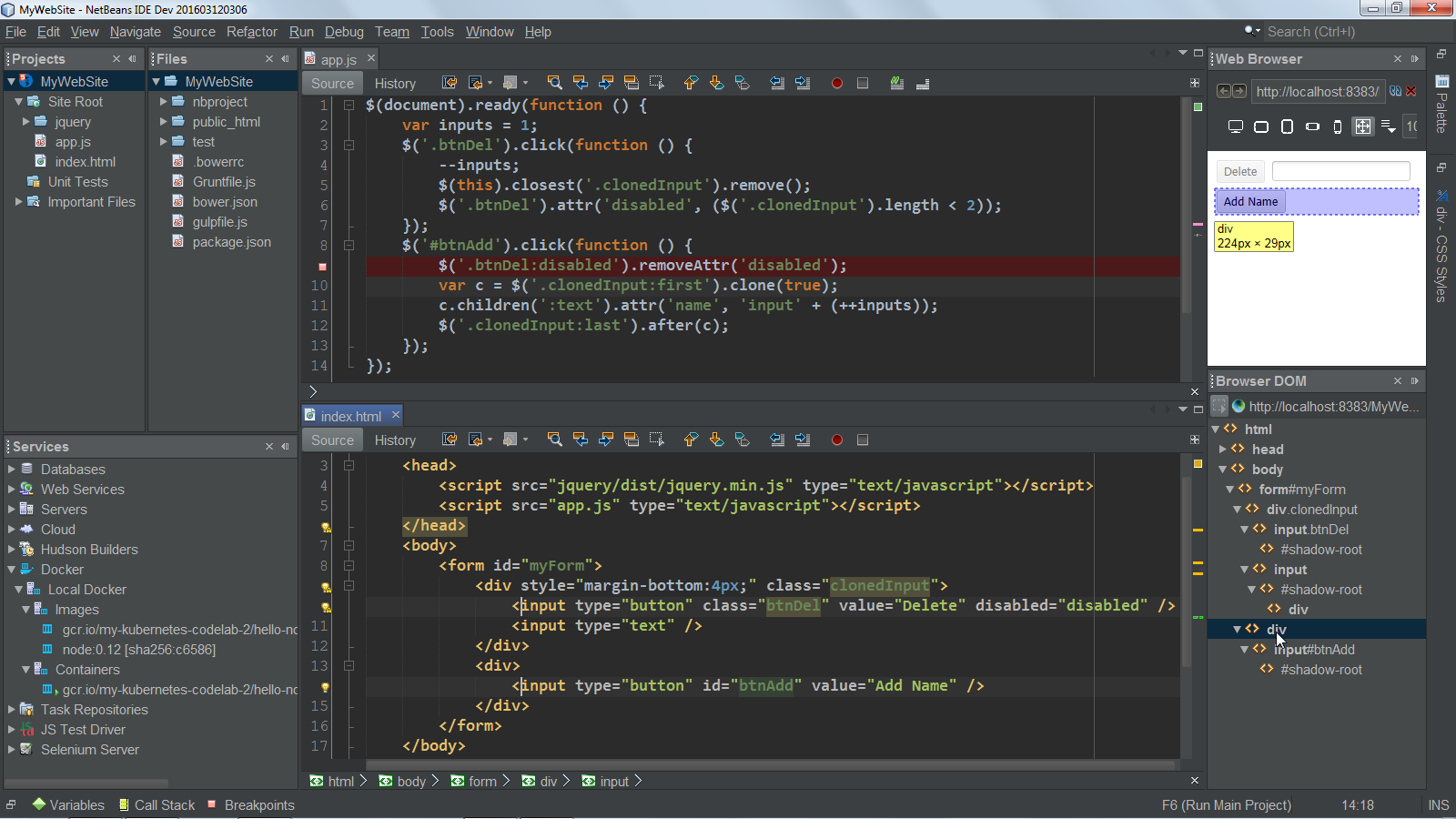
IntelliJ IDEA includes several predefined keymaps, including NetBeans. You can also use the Project Structure dialog ( Ctrl+Alt+Shift+S) to manage JDKs, libraries, module dependencies, and so on, similarly to the Project Properties dialog in NetBeans.įor more information, see Settings/Preferences and Project Structure dialog. This dialog is used to control behavior and appearance of IntelliJ IDEA.
Netbeans java windows#
The equivalent of the NetBeans Options dialog is the File | Settings (for Windows and Linux) or IntelliJ IDEA | Preferences (for macOS) dialog. In IntelliJ IDEA, you can also group modules, but, unlike in NetBeans, a module group is not a project, it's just a way to organize your modules and quickly build them within the same project. It is another type of project, which facilitates the deployment of multiple interdependent modules on top of NetBeans. NetBeans modules can belong to a module suite. In NetBeans, a module is identified by its MANIFEST.MF file, while each IntelliJ IDEA module has the. In IntelliJ IDEA, a module is an essential part of any project: when you create a project, you'll have at least one module. In NetBeans, a module is a type of project within a NetBeans Platform application. Modulesīoth NetBeans and IntelliJ IDEA had already had their modules before the Java 9 modular system was introduced. You can encounter this term when you group your recent projects on the Welcome screen, but these groups do not appear on the Project tool window. In IntelliJ IDEA, you open one project per window, so you don't have an equivalent for NetBeans project groups. Projects of the same group are opened in the same window you can switch between projects groups without leaving the IDE. In NetBeans, a project group is a way to organize projects you are currently working on. If you want to work on multiple NetBeans projects at the same time, you can import them as modules. For more information, refer to Open, close, and move projects. When you open a project, you have to choose whether to open it in a new window or to close the current project and open a new one instead. Unlike NetBeans, IntelliJ IDEA cannot open multiple projects in the same window. NetBeans projects are more like IntelliJ IDEA modules.
Netbeans java code#
IntelliJ IDEA creates a project for an entire code base and a module for each of its individual components. The following table maps the most important NetBeans concepts to IntelliJ IDEA ones. NetBeans and IntelliJ IDEA use different names for similar entities.


Netbeans java how to#
If you use one of these build tools, refer to Maven and Gradle for more details on how to work with them in IntelliJ IDEA. IntelliJ IDEA is fully integrated with Maven and Gradle. If you used NetBeans with Ant, IntelliJ IDEA will recognize Ant build scripts in your projects, and the Ant build scripts found notification will appear. nbproject directory and the build.xml file will remain untouched, and you'll be able to use IntelliJ IDEA along with NetBeans.

This is used to store the IntelliJ IDEA project settings such as VCS settings, inspection profiles, or code styles. In the Open Project dialog that opens, click New Window. If you are using Maven with NetBeans, and you want to import a Maven project into IntelliJ IDEA, select your project's pom.xml. In the dialog that opens, select the directory in which your sources, libraries, and other assets are located and click Open. Otherwise, from the main menu, select File | Open. This section covers some IntelliJ IDEA-specific aspects. Switching from NetBeans to IntelliJ IDEA requires understanding some differences between the two IDEs.


 0 kommentar(er)
0 kommentar(er)
